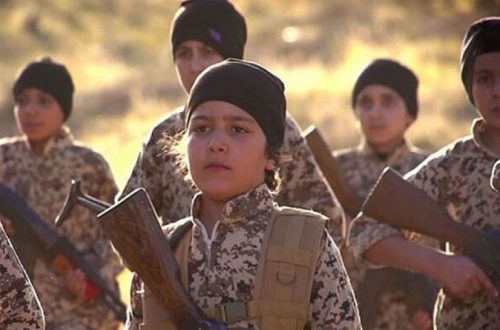This is a guest post by Jeevan Vipinachandran
How can the West quickly eliminate IS terrorists in Iraq with minimal blood and expenditure? Fortunately, while vexing, this question has a ready answer: the use of speed and surprise in a ‘’blitzkrieg’’ fashion by Special Forces. This enables relatively small forces of men to overpower larger forces effectively and quickly. The combination of violence and surprise prove to be overwhelming for the enemy force; this was demonstrated most effectively when SEAL Team 6 successfully assaulted Bin Laden’s hideout in Pakistan. Special Forces such as the SAS can efficiently degrade much of the terrorist enemy in that region. There is precedent for the use of Special Forces in tandem with local allies in Iraq. Special operations forces can be up scaled and co-ordinated across Iraq and Syria, at relatively low cost, to effectively counter ISIS and begin the process of its degradation and destruction. This will then lay the groundwork for a political solution to regional conflict.
Blitzkrieg is about concentrating a strong force on the enemy’s weak point. It does not necessarily need armour or conventional forces, as it fundamentally uses concepts of surprise and manoeuvre. Special Forces, which are all about surprise and violence of action, are ideal for ‘’blitzkrieg without tanks’’ against groups such as IS, sneaking up on them unexpectedly at night or while they are engaged in battle with local militias. In 2001, SOF teams in Afghanistan would insert laser designators on fixed positions near Taliban areas, enabling the international air armada to annihilate the terrorists. This was repeated in Iraq during the surge, when military power was optimally effective because there was a sufficient presence to eliminate al-Qaeda.
The Peshmerga and the Shia militia in Iraq are numerous and, guided by SOF advisors, could expel Salafi extremists. Upscaling a special operations led war is entirely plausible, as the technologies for relatively low cost efforts against terrorists are currently in use. For example, the US drones such as the Predator have been used extensively in hotspots such as Pakistan and Afghanistan. Such armed drones can be guided by special operators providing real time targeting of some of the most unstable spots in the world. These forces can be co-ordinated using existing communications assets used by SOF, enabling them to be used in an up scaled strategic role.
Operation Viking Hammer is one example of how special operations can be operationalised on a larger scale. This little known operation involved special operators embedded with Kurdish Peshmerga, helping to eliminate the Ansar al-Islam terrorist group. Ansar al-Islam were Islamists who had succeeded in gaining some ground out of Kurdistan. The SOF identified targets for cruise missiles and enabled Peshmerga artillery to eliminate much of Ansar in the ensuing battle. Special Forces also eliminated al-Zarqawi and captured Saddam Hussein, highlighting their ability to eliminate high value targets in Iraq.
In the current campaign against IS, Western special forces are assisting Iraqi forces to tackle the threat, guiding drone and air strikes to clear the way to retake areas held by terrorists, albeit on a smaller scale. A night campaign to snatch IS leaders could be followed by relentless special forces led drone strikes in the day, helping to replicate the positive outcome of the battles for Amerli and Haditha, all over Iraq. In those battles, spotters on the ground helped guide airstrikes to slowly but surely regain the lost ground, saving the lives of Kurdish and Turkmen civilians and creating setbacks for IS. Ideally, SAS, the Green Berets and Navy SEALs can designate targets on a nationwide scale, wherever IS terrorists pose the greatest threat.
Hostage taking has been identified by former CIA analyst Bruce Riedel as something which has not been hitherto seriously analysed as a threat However, Special Forces already routinely train in counter-hostage situations and have experience of high profile hostage rescues. Additionally, a special operator has thousands of hours of intense training in addition to actual combat experience. The constant repetitive training coupled with many secret operations means tremendous efficiency in combat. This means special operators are equipped to deal with other emerging threats in the MENA region, such as the hostage taking of Westerners. It follows that a force of SOF operators can be on-call immediately to respond to major hostage rescue crisis situations, on top of degrading IS.
Special Forces have the flexibility to give Western leaders the most bang for the buck, with relatively minimal expenditure combating IS in Iraq. Small groups of highly trained men, working in the shadows to eliminate the terrorists of IS, are a good and well established strategy idea that ought to be implemented on a larger scale as possible, to deal with one of the clearest threats to the West in decades.


